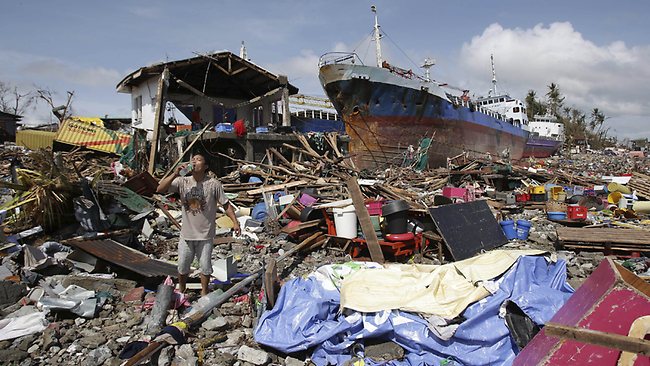Philippines’ government says it is facing its biggest ever logistical challenge after Typhoon Haiyan, which affected as many as 11 million people.
Cabinet Secretary Rene Almendras said the government had been overwhelmed by the impact of Haiyan, one of the most powerful storms on record.
The official death toll stands at more than 2,300, but local officials and aid workers say it could rise much higher.
Rene Almendras said the government had responded to the disaster “quite well”.
Aid is slowly beginning to arrive in the worst-affected regions.
US military planes have been arriving at Tacloban’s ruined airport on Wednesday, delivering World Food Programme supplies, which can be carried by helicopter to outlying regions, and a French-Belgian field hospital has been set up.

On Tuesday, eight people died when a wall collapsed as thousands of desperate survivors mobbed a food warehouse.
And on Wednesday there were reports of shots being fired in the street and of a teenaged boy being stabbed in the stomach.
With warehouses empty, the main concern for people still in Tacloban was food and water. Some survivors resorted to digging up water pipes for supplies.
On a visit to the city, UN humanitarian chief Valerie Amos said aid was coming in but “the priority has got to be, let’s get the food in, let’s get the water in”.
Health officials warn the worst-affected areas are entering a peak danger period for the spread of infectious diseases.
Typhoon Haiyan – one of the most powerful storms ever recorded on land – hit the coastal Philippine provinces of Leyte and Samar on Friday.
It swept through six central Philippine islands before going on to kill several people in Vietnam and southern China.
Disaster management officials in the Philippines have put the confirmed death toll there at 2,344, with another 3,804 injured as of 20:00 local time. They said 79 people were still missing.
The head of the Philippines Red Cross, Gwendolyn Pang, also said she expected the official death toll to rise.
[youtube GILXS752Z1c 650]
